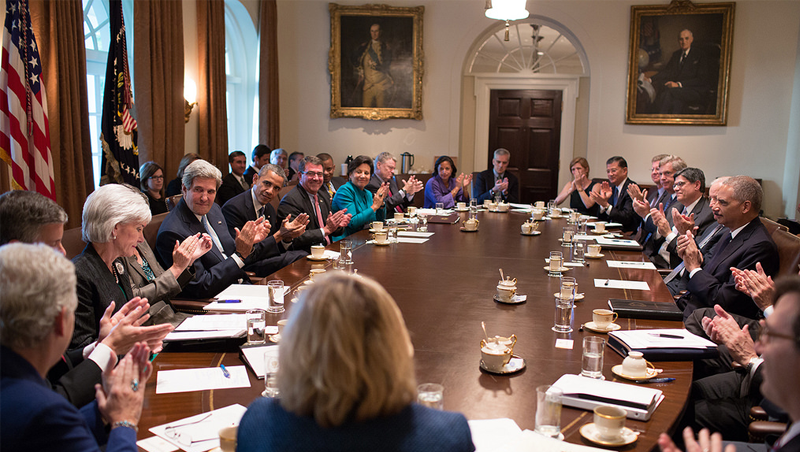Twenty-Third Amendment Facts
The Twenty-Third Amendment to the United States Constitution was ratified on March 29, 1961.
The amendment gave Washington, D.C. representatives in the electoral college. This allows residents of Washington D.C. to be represented in the presidential election even though they are not officially part of any state.
What does the Twenty-Third Amendment say?
Section 1
“The District constituting the seat of Government of the United States shall appoint in such manner as Congress may direct:
“A number of electors of President and Vice President equal to the whole number of Senators and Representatives in Congress to which the District would be entitled if it were a State, but in no event more than the least populous State; they shall be in addition to those appointed by the States, but they shall be considered, for the purposes of the election of President and Vice President, to be electors appointed by a State; and they shall meet in the District and perform such duties as provided by the twelfth article of amendment.”
Section 2
“The Congress shall have power to enforce this article by appropriate legislation.”
A Brief History of the Twenty-Third Amendment
Washington D.C. is a federal district, not a state. It was established from land belonging to Maryland and Virginia.
Because Washington D.C. is not a state and does not belong to any state, its citizens historically were not allowed to elect public officials.
Although they couldn’t vote in federal elections, citizens of Washington D.C. did pay federal taxes, which many believed was unfair.
On June 16, 1960, an amendment was proposed that would give D.C. citizens the right to vote in presidential elections.
The amendment granted D.C. the number of electoral college votes the district would receive if it were a state, but “in no event more than the least populous state.” In practice, this gives Washington D.C. three electors.
Ratifying the Twenty-Third Amendment
The Twenty-Third Amendment was officially ratified on March 29, 1961. It was ratified quickly, but not everyone agreed with the amendment.
The amendment was proposed during the civil rights movement. Many people were arguing for equal rights for all citizens. Other people wanted separate facilities for white people and people of color.
The population of D.C. was majority African American. This meant that adding electors from D.C. could be helpful to the civil rights movement.
The amendment was not ratified by any of the southern states. In fact, Arkansas rejected the proposal entirely.
Still, many states quickly ratified the amendment, and the citizens of Washington D.C. were given the right to vote in presidential elections.
Other Interesting Facts About the Twenty-Third Amendment
The Twenty-Third Amendment was the second-fastest amendment to be ratified in U.S. history.
Residents in Washington D.C. voted for the first time in the 1964 presidential election. Lyndon Johnson managed to win the district’s three electoral votes.
A popular Washington D.C. license plate said, “Taxation without representation.” This is a reminder of the slogan, “No taxation without representation” that originated during the 1700s and was one of the major reasons for the American Revolution.
A 1978 constitutional amendment that would have given D.C. a vote in Congress was never ratified. D.C. residents still can’t elect voting members of the House of Representatives or the Senate.




